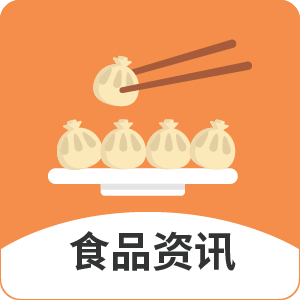This piece is the second installment of an ongoing series of L.E.K. perspectives on the impact of and responses to the crisis
We’re publishing a series of insights and perspectives on how COVID-19 is impacting the food and beverage landscape. Our goal is to synthesize retailer, foodservice, and consumer packaged goods (CPG) responses during this unprecedented period, to help our clients in the food and beverage industry monitor key developments, and to share best practices. This pandemic is first and foremost a humanitarian crisis. We at L.E.K. Consulting extend our heartfelt sympathies to all who are affected.
At-home food consumption in the U.S. has increased significantly over the past month as foodservice operators across the country are forced to close or to significantly limit sales. According to L.E.K.’s COVID-19 survey of 2,600 consumers on April 1st 2020, respondents reported a 15%-20% increase in shelf-stable dry grocery expenditure and a 25%-30% increase in perishable grocery expenditure since the outbreak began. Barclays estimates that $61 billion to $118 billion in sales will shift from foodservice to retail during the second quarter, implying sales lifts of 32%-62% for the quarter and 8%-15% for the fiscal year
Economic insecurity and rising unemployment levels will impact food and beverage choices and purchase behavior in the upcoming months as consumers shift away from COVID-19 panic-driven stock-up purchases and adapt to new budget constraints. IRI reported an ~10% YoY increase in private-label food sales in early March, and forecasts a shift to value channels and smaller pack sizes with prices per unit. The increased penetration in private label may continue after the crisis subsides, as supermarket private-label penetration during the previous recession increased ~2 percentage points from 2007 to 2009 and maintained share in subsequent years.
Retailers and CPGs are adapting to meet rapidly changing consumption behavior as consumers adopt new daily routines forced by COVID-19 constraints. Brands with ecommerce capabilities are seeing a significant online sales shift, and ecommerce retailers and intermediaries are seeing sales increases and are investing in infrastructure and hiring more staff to support this additional demand. In a Gordon Haskett Research Advisors survey, ~41% of respondents were buying groceries online for the first time. This ecommerce shift is expected to have lasting effects as some consumers continue grocery shopping online post-COVID-19.
Food categories with long shelf life see early gains as panicked consumers stock up. Shelf-stables and frozen categories with long shelf lives saw a spike in sales as consumers stocked up out of panic as uncertainty around COVID-19 mounted in February and March. Nielsen reported significant increases in U.S. sales of powdered milk, dried beans, canned meat and fish, canned beans, rice, pasta, and bottled water in the weeks post-outbreak compared to prior months. Skyrocketing demand has led to out-of-stock rates as high as 70% for some shelf-stable items such as canned beans according to IRI. Campbell Soup has also felt the effects of consumers opting for more canned goods, recently posting a net income of $1.2 million compared to a quarterly net loss of $59 million a year ago. As consumers restrict in-person store visits and store traffic slows, categories typically driven by impulse, such as confectionary, may see dampened sales.
All-family favorites, comfort food staples and alcohol see growth with consumers limited to their homes. With school and office closures and statewide “shelter in place” policies in effect, parents are having to balance child care and meal preparation with working from home, which is driving demand for pantry staples, family-friendly foods and meal kits. Large food companies, including J.M. Smucker Co., Hormel Foods Corp., Tyson Foods Inc. and Kraft Heinz Co., have announced production increases of as much as 40% in order to keep up with demand, according to Credit Suisse. Consumers are also turning to comfort foods and tried-and-true snacks during a time of uncertainty, and both Nielsen and IRI reported increased sales in snacking categories such as ice cream, popcorn, chips, pretzels, fruit snacks and cookies. In-store and ecommerce liquor sales have also seen a significant increase, up 178% YoY for the week beginning March 16 as consumers shift from bars and restaurants to drinking at home.
Sources: Barron’s, Beverage Daily, Bloomberg, CB Insights, CNBC, CNN, Digital Commerce 360, IFDA, IRI FMI, Forbes, Yahoo Finance, Food Business News, Food Engineering Magazine, Foodnavigator-USA, Forbes, Fortune, Fox Business, Grocery Dive, MediaPost, NOSH, Private Label Manufacturers Association Data, Supermarket News, Target, Winsight Grocery, World News Monitor, WSJ, USA Today, L.E.K. research and analysis
 Pages you might like
Pages you might like








 Latest information
Latest information
 Follow official account
Follow official account
 Online support
Online support
 鄂ICP备2022017323号
鄂ICP备2022017323号
 鄂公网安备 42018502006493
鄂公网安备 42018502006493
 Launch Exhibition
Launch Exhibition
 Release information
Release information



 Today's topic
Today's topic








